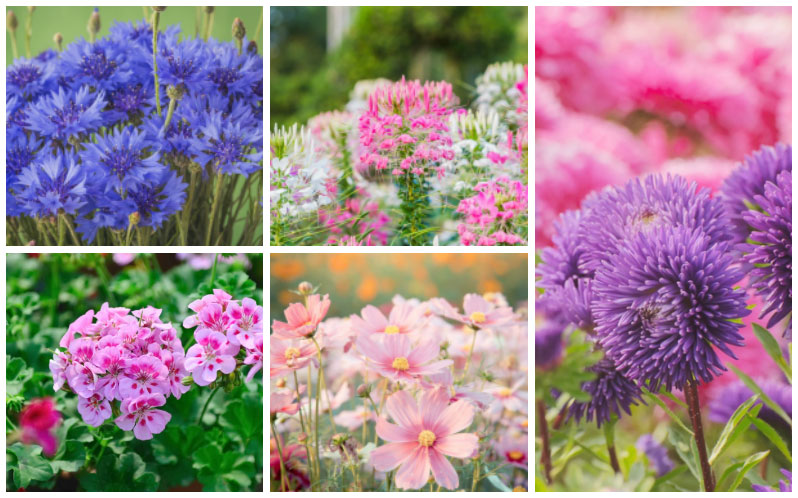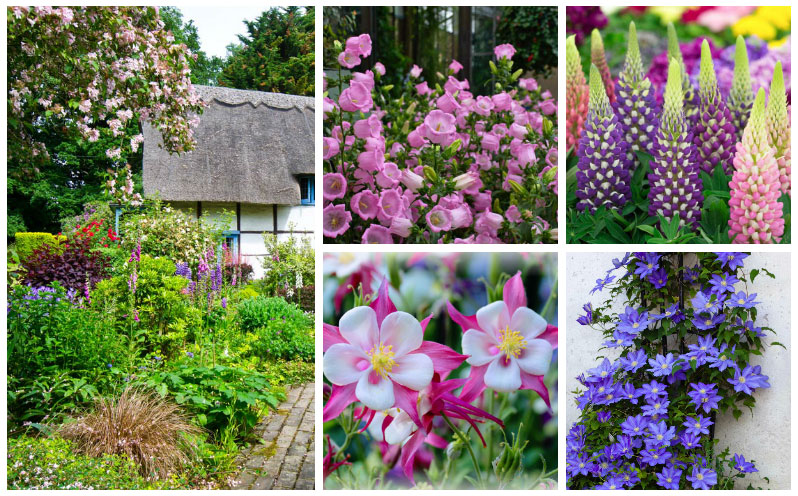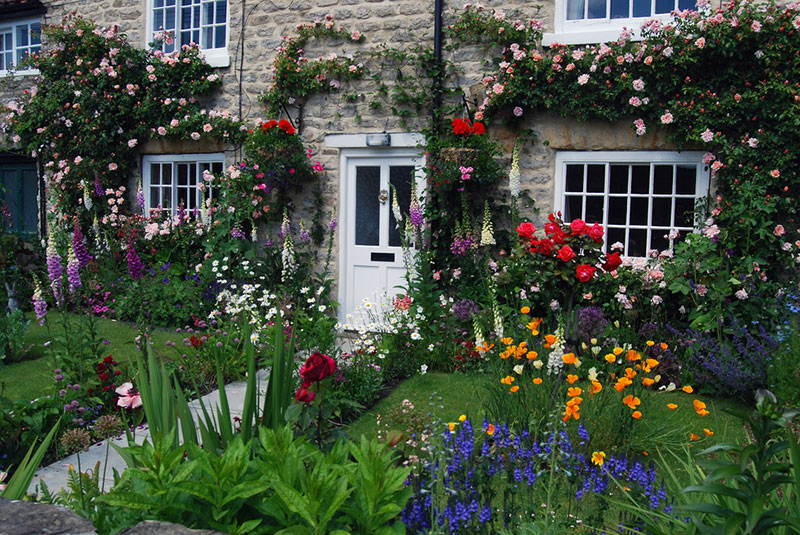
Cottage gardens have become exceptionally popular due to their Old World charm and whimsical beauty. They are elegant spaces that overflow with varieties of flowers, herbs, shrubs, and décor. A cottage garden is hand-crafted by the gardener, making it something truly special.
A cottage garden will never be the same from one year to the next, as some plants will intertwine with others, consistently changing as each new spring season arrives.
Considering growing your own cottage garden? You don’t have to live in a cottage to create a beautiful sanctuary of flowers to enjoy every day.
What Exactly Is a Cottage Garden?
A cottage garden is defined by the type of plants used and the style that they are planted. Basically, it means that all the flowers and plants are grown to blend in a pleasant style. Few gardens are more pleasing to behold than an old-fashioned cottage garden. The juxtaposition of a multitude of flowers gives off a cheerful, whimsical feeling that allows gardeners a quiet sanctuary to relax and step back in time for a moment.
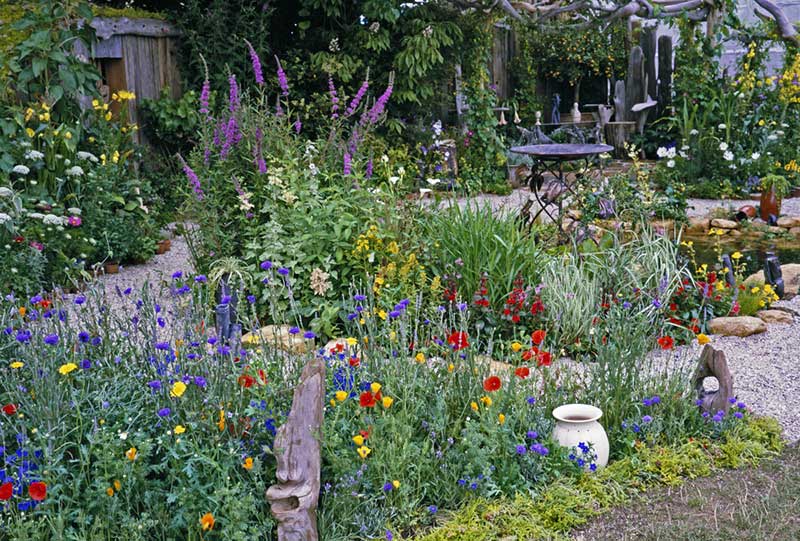
History of the Cottage Garden
English cottage gardens have a longstanding, rich history spanning back to medieval times where they were used to grow sustenance. During this time a typical cottage garden contained fruits and vegetables, herbs, a beehive, and smaller livestock typically were kept in the cottage garden. Thus, creating the name “cottage garden” as it was for poorer cottage dwellers to sustain themselves with food. If there were any flowers or plants, they needed to have a practical value such as providing nourishment or medicinal value, rather than simply being aesthetically pleasing. The land plots of these medieval cottagers were so small that everything grown was jam-packed together, rather than plotted out with any type of designated spacing.
Flash forward to today and a “cottage garden” now simply means a type of plotting many aesthetically pleasing flowers and perhaps a few herbs in a small space all jumbled together. Today, cottage garden refers to a style of gardening, rather than having anything to do with living in a cottage.
Choosing the Best Plants for your Cottage Garden
To begin, most typical cottage garden flowers will thrive in full sunlight or partial shade. You’ll want to ensure you choose a location for your cottage garden that supports those flowers’ sunlight requirements. When planting flowers, you’ll want to mix annuals and perennials and note bloom times to keep your garden blooming as long as possible.
Cottage gardens are made to contain a delightful mixture of plants, many of which have fragrances to them, combining to create a beautiful scent-scape.
No cottage garden is complete without traditional English lavender. The tall, purple stalks of blooms emit a stunningly sweet scent. Sweet pea is also a mainstay as these flowers will weave around shrubs and bushes and give off a strong, lovely perfume. They can be trellised on a fence line or an arbor for a delightful look. Purple Sweet pea looks lovely when planted next to the delicate pink stalks of Hollyhock. Both grow quite tall their scents compliment each other very nicely.
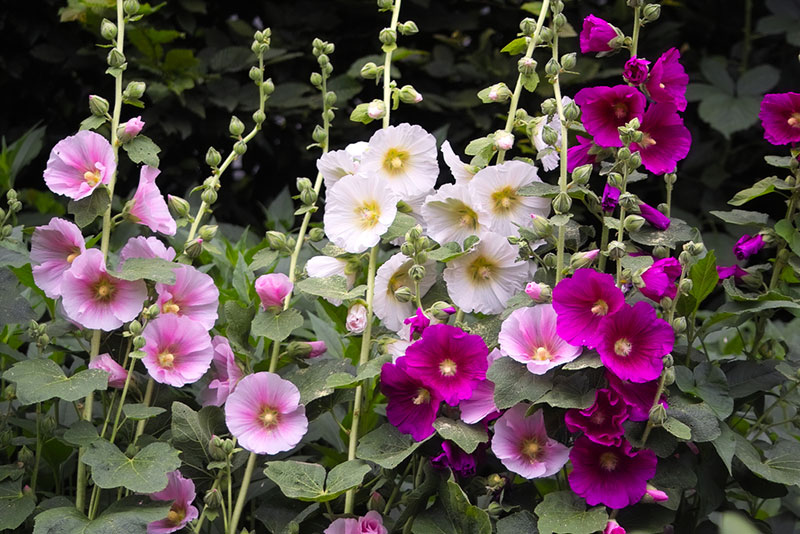
One of the biggest keys to an exceptional cottage garden is the varying heights of the flowers and shrubs that all intertwine in a small space. Daylilies, marigolds and English daisies all have a classic country charm that will look lovely when grown next to some of the taller, ornamental flowers like English lavender and sweet pea. None of them have much of a fragrance, but they all have exceptionally bright, bold sunshine-like colors that look lovely next to delicate colors like lavender and pink. These two early bloomers will bloom nicely next to other spring bloomers like violas and pansies.
Larkspur, beardtongue, foxglove, and snapdragon are three exceptionally elegant flowers that are also traditional staples of many cottage gardens. Larkspur’s delicate blooms blossom on stalks and come in shades of blue and white. Beard Tongue, foxglove and snapdragon both have bell-shaped blooms that hang from stalks and are great attractors of bees and hummingbirds. All three of these flowers have exceptionally vibrant flowers.
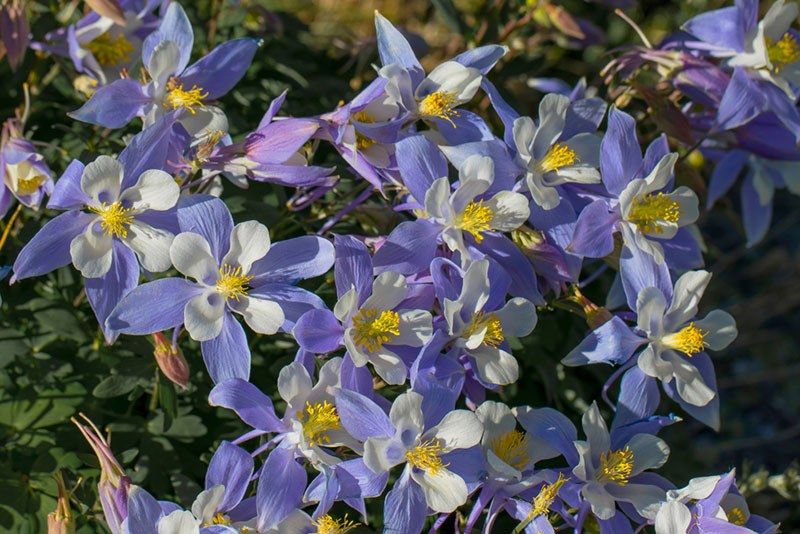
Columbine and flowering tobacco are two star-shaped bloomers that give a woodland feel to your cottage garden.
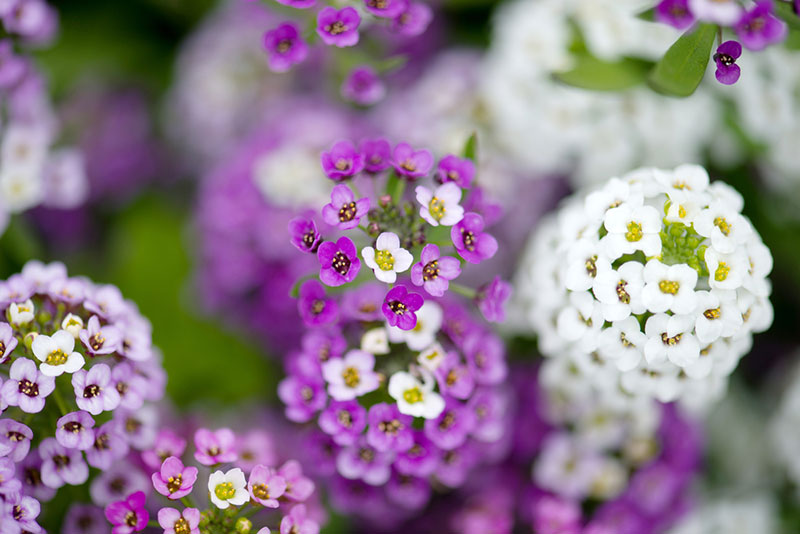
For your groundcovers, the endless, tiny, snow-white blooms of sweet alyssum and its light-green foliage make are always a popular choice due to their sweet fragrance.
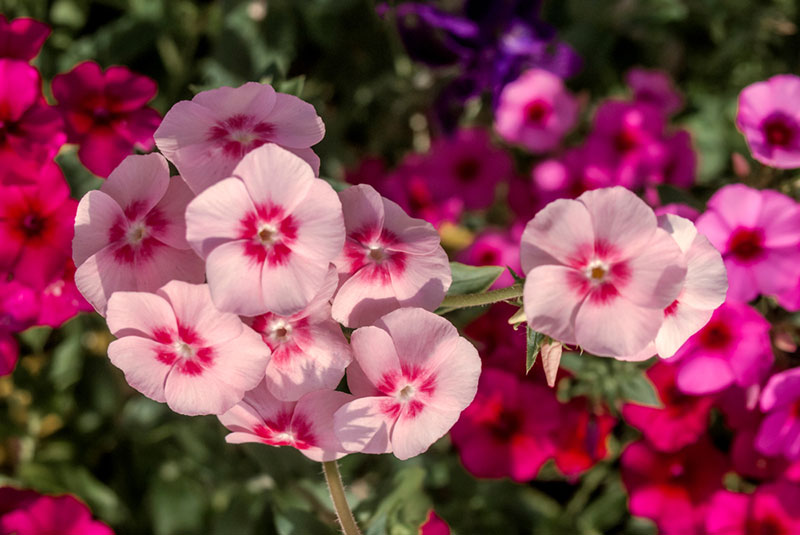
The pink, purple and white blooms of phlox are another lovely choice due to the fact that they are irresistible to hummingbirds, bees, butterflies, and birds, bringing life to your cottage garden.
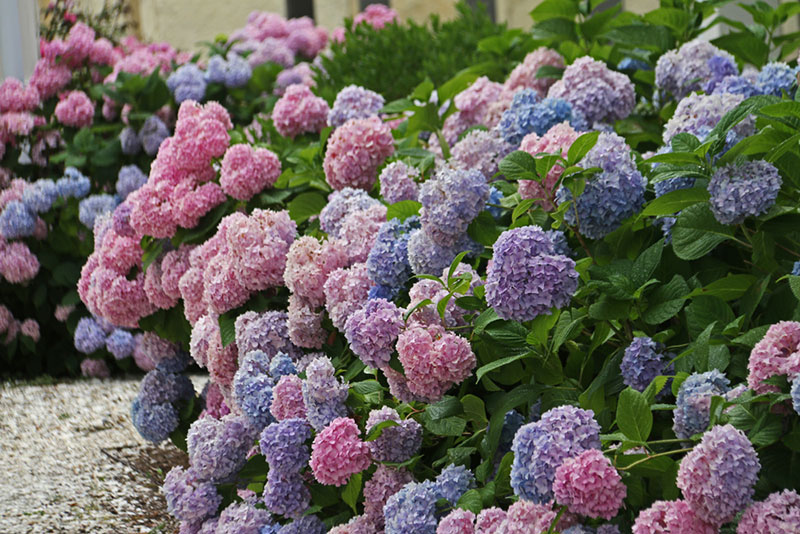
Don’t forget about your shrubs. A striking butterfly bush is a perfect addition. Hydrangeas and lilacs bushes are also a staple of the classic Old-World cottage garden. Evergreen shrubs and ornamental grasses will give your cottage garden structural depth even in the colder months. You can’t forget about mixing in a variety of rose bushes throughout your garden. They are always included in cottage gardens and their traditional beauty makes for great focal points that will make all the plants surrounding them “pop.” Climbing roses are a gorgeous choice to plant against a fence line so you can watch them spill out through the fence. You also will want to make your cottage garden function by mixing in a few herbs such as parsley and mint that have a rich, earthy scent. Vines are another excellent addition that can drape fences, arbors or gazebos.
Accents for your Cottage Garden
One of the things that makes a cottage garden so charming are the additional design elements that add visual interest and create a picturesque scene. The majority of cottage gardens typically are built around a small path or walkway, giving the visitor the chance to walk peacefully through as the flowers spill out toward the path. Many cottage gardens have brick or cobblestone pathways that give an old-world charm. Some cottage gardens have rustic-looking ironwork fencing or a picket fence surrounding them, often accompanied by a small gate or embellished entryway.
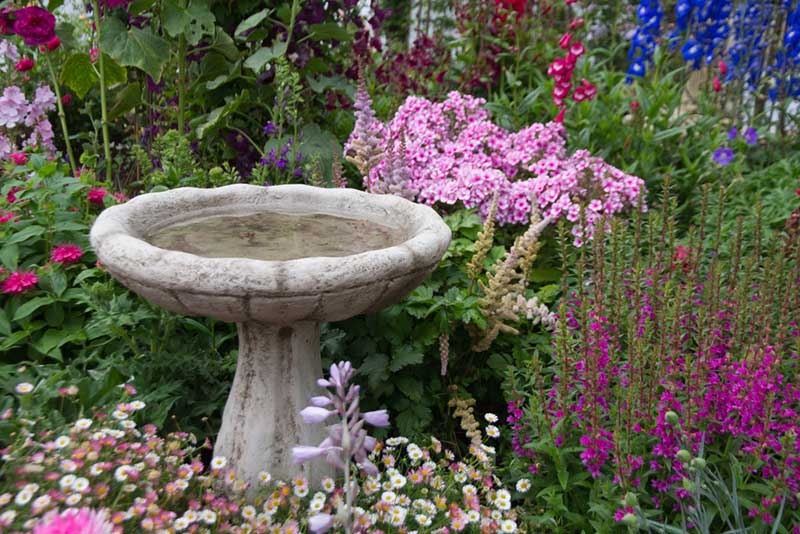
A key element to creating a truly captivating cottage garden is the addition of little design elements that the flowers can go around. A birdbath, statue, gazebo or a small bench for reading or simply soaking in the garden’s beauty are all ideal elements that will give the garden a truly peaceful ambiance. You can also gather a variety of rocks to line a bath or create a border around a flower that you want to be one of the showstoppers in your cottage garden.
A cottage garden will give you a whimsical place to retreat after a long day. The arrival of butterflies and hummingbirds will charm you as you read a book or take in the sweet fragrances of the flowers around you. The best thing about a cottage garden is that no two are the same. The visual components of the juxtaposition of the flowers, design elements, and shrubs will be a work of art that you’ve crafted!





